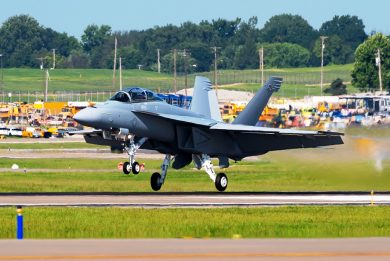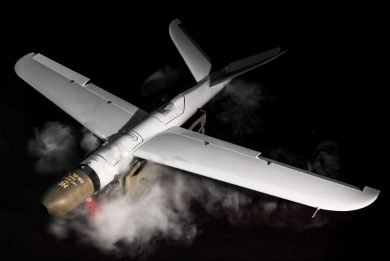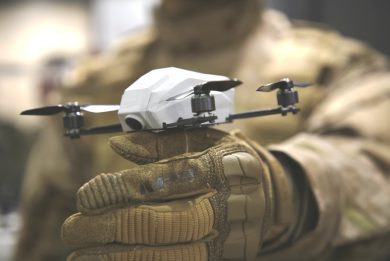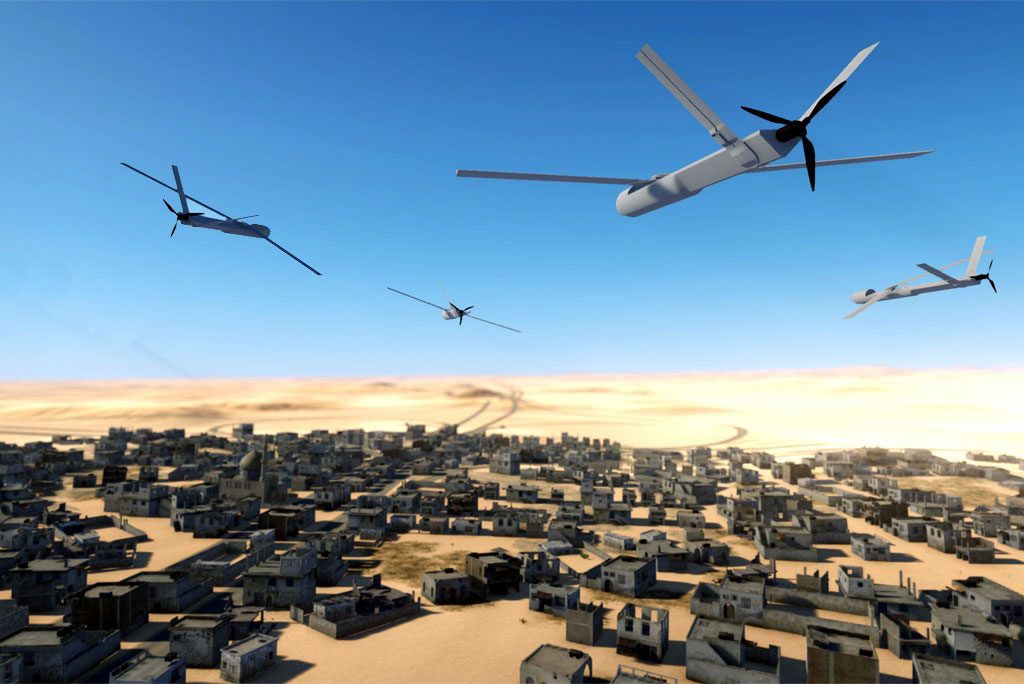
New details emerge on Escribano’s swarm UAV developments
By Paolo Valpolini
Escribano Mechanical & Engineering, the Spanish family-owned company specialised in design and manufacturing of complex defence systems, recently announced it has been awarded a contract for the development of an autonomous multiplatform swarm system for ISTAR purposes. Known with the acronym LISS (Long-range Intelligent Security System), the system under development by the company based in Alcalá de Henares is made of the swarm architecture and of a series of unmanned air vehicles of different types, two of them already flying.
All current and future air vehicles, which Maximum Take Off Weight (MTOW) will range from slightly over 1 kg up to 75 kg, are or will be fitted with the same avionics, which allows reducing not only costs but also the logistic footprint, a key issue when using high numbers of UAVs to cope with the swarm concept. “In our system all the Artificial Intelligence is on board the aircraft, and there is no hierarchy as all flying elements are one node of the system,” Jesús Martín Sanchez, responsible for swarming and UAV developments, tells EDR On-Line adding that this allows to have a highly fault tolerant system as if some of the UAVs are neutralised by enemy action, the system is inherently redundant and automatically reorganises itself. Although not many details were provided on how the UAVs communicate among them, it was made clear that the system takes into account metrics, and is able to carry out a mission in full autonomy, albeit under the monitoring of a human element that is based in the Ground Control Station. “The GCS is quite different from those we are used to, as it provides the operator only key information and those regarding safety,” Martín explains. As option the system can operate in full autonomous mode, however the standard configuration sees the man-in-the-loop, the operator being able to control all the swarm or only selected assets. The system sees the GCS as a standard node, therefore if communications are available the station receives all information shared among the swarm, which allows to review missions, albeit the system being based on AI it features self learning capabilities that allow it to improve its performances while it acquire “experience”.
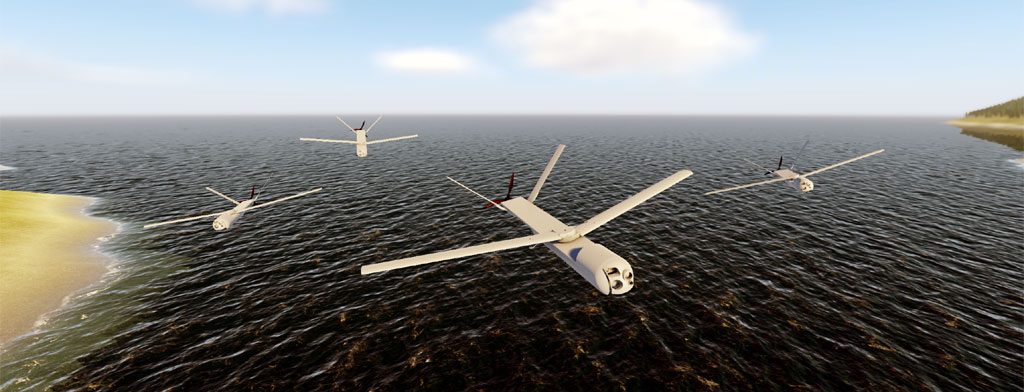
“We demonstrated a mission with six UAVs, which did the reconnaissance getting ortophotos, the AI allowing to automatically identify and classify targets. These were then prioritised by the system that decided which UAV would hit the designated target, while the rest of the fleet re-planned the mission and continued with the remaining assets,” Martín tells us.
The swarm AI-based system is considered at TRL 4-5, the next milestone being a demonstration with 15 UAVs controlled by a single operator, another operator being in charge of six different payloads. Escribano received a contract from the Planning, Technology and Innovation Subdirection of the Spanish Ministry of Defence for continuing the Research and development work, and in October-November 2021 a new demonstration will be carried out in a real environment. The contract falls within the Phase 2 of the RAPAZ programme, launched five years ago by the Spanish Ministry of Defence to evaluate UAVs under 150 kg MTOW.
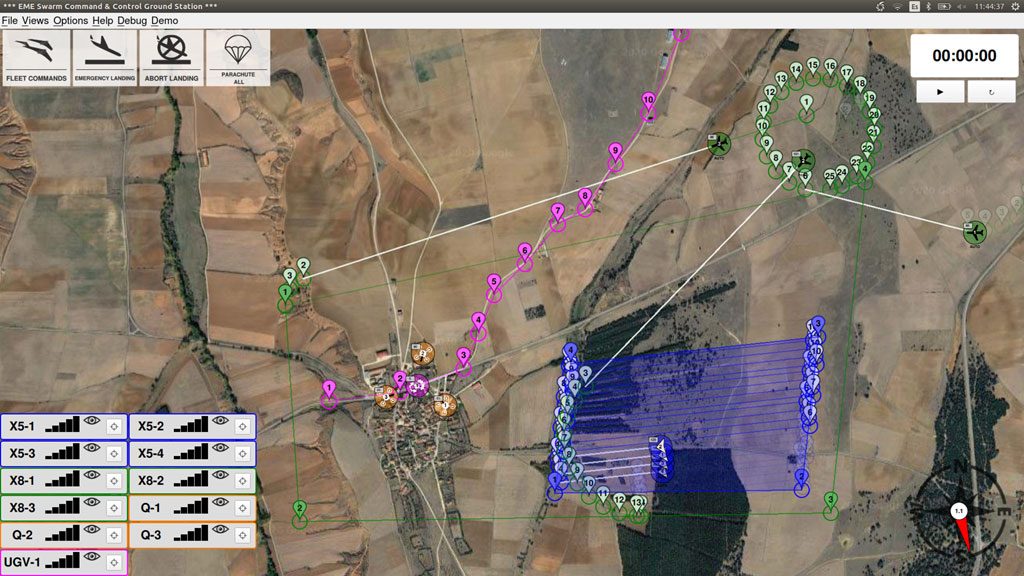
Coming to air vehicles, Escribano is developing a whole family of unmanned flying assets both fixed and rotary wing, which will be available in ISTAR configuration as well as in a loitering munition version, with the add-on of a lethality package. Currently two such air vehicles are flying, a fixed wing UAV with a 7 kg MTOW and a quadcopter which MTOW is set at 4 kg. The two air vehicles are fitted with the same sensor package; in the fixed wing the gimbal is located at the front while in the rotary wing it is installed under the air vehicle.
The fixed wing system can be launched from a 120 mm diameter canister, which allows easy integration into different platforms, land, sea and air based. According to available images the wings are folded backwards on the top of the fuselage, while the V empennage folds forward, propulsion being provided by an electric motor installed at the back that activates a three-blade pushing propeller with foldable blades. It can operate at 5-10 km from the take-off point and has a 45 minutes endurance. Escribano is looking at integrating its fixed wing air vehicle into remotely controlled weapon stations; the company is developing the Guardian 30 unmanned turret that is being proposed for the Dragon 8×8 infantry fighting vehicle [1] programme of the Spanish Army, but looks also at third parties systems.
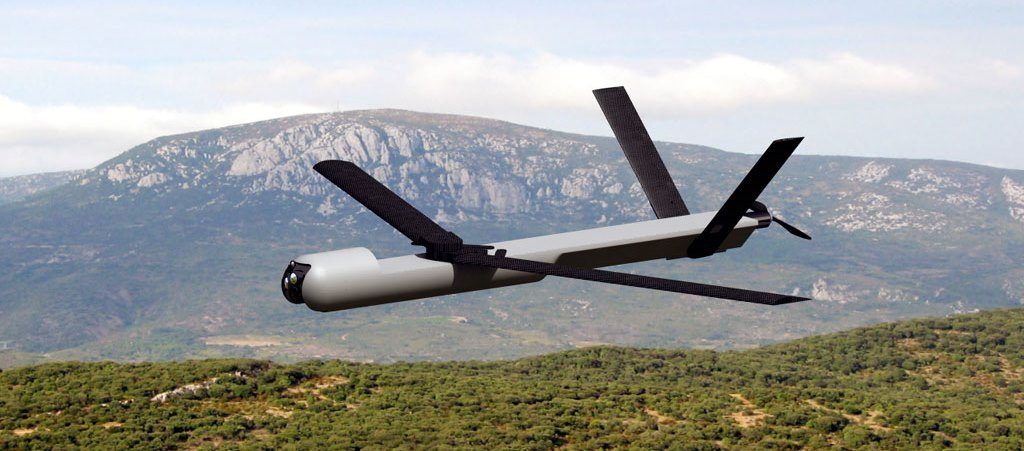
The choice of the 120 mm diameter tube is apparently not linked to a launch capability from the smoothbore gun of a main battle tank, but rather to its compatibility with maritime patrol aircraft sonobuoys launch tubes, as it allows it to be inserted in a A-size sonobuoy canister, the UAV being released once the canister parachute is open; as this canister is 914 mm long and has a diameter of 124 mm, the first data gives a hint on the probable air vehicle length, which brings to a wingspan of around 1.35 meters. As for the rotary wing, this is fitted with four electric motors, and has an endurance of around 30 minutes. Escribano carried out over 15 test flights of the two UAVs, and their configuration is almost frozen. “”We are carrying out some minor redesign of the systems, mostly to smoothen the production process,” Martín says, adding that in order to reduce the logistic footprint most components are produced exploiting additive manufacturing. EDR On-Line understands that this might lead to allow military logistic support to produce some elements while deployed, avoiding the need to transport sets of spare parts.
“We at Escribano are in the very final stage of development of a third member of our UAV family; it will be the smallest one, with a MTOW of 1.4 kg, it has a fixed wing configuration, and we expect carry out the first flight in the coming weeks,” Martín announces, which means that between late January and early February the newborn UAV might take the air. A series of other developments are underway at Alcalá de Henares, but Mr. Martín declines to comment on those, as requirements might change bringing to a shift in development priorities.
Escribano Mechanical & Engineering is not new to the UAV field having
developed RPAS soft-kill and hard-kill solutions in the past years. However the
work on the new swarm system is relatively new to as it is only eight months
old; in fact the company hired a number of engineers who were working on a
project within a company that has abandoned that development, hence it
leveraged the 4-year work done previously.
[1] Escribano echanical & Engineering is part of TESS Defence, the temporary grouping of companies which sees also the presence of Santa Barbara, Indra and Sapa Placencia, purposely formed for the development of the Dragon 8×8 IFV, Escribano being responsible for weapon systems, its Guardian 2.0 having been already selected as secondary armament in a turret-on-turret configuration.
All images courtesy Escribano

